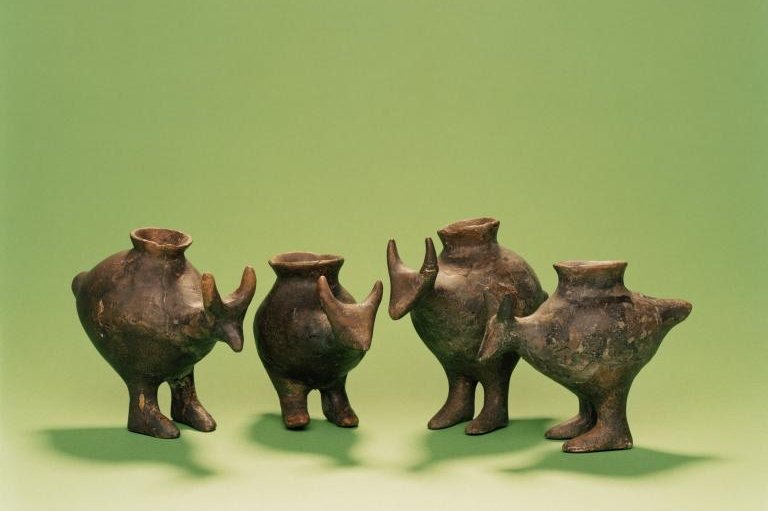New research suggests the Late Bronze Age feeding vessels seen here -- from a museum collection in Vösendorf, Austria -- were used to feed infants animal milk after they were weaned from breast milk. Photo by Enver-Hirsch/Wien Museum
Sept. 26 (UPI) -- Parents were feeding babies animal milk from a bottle as early as the 5th century B.C.
When researchers analyzed a series of small ceramic vessels recovered from Bronze Age and Iron Age infant graves in Bavaria, they identified the residue of nonhuman milk.
The prehistoric bottles boasted small spouts for babies to suckle, and some of the vessels were adorned with animal feet and heads.
In the lab, scientists used chemical and isotopic analysis to determine the liquids they contained. The tests revealed the presence of ruminant milk from domesticated cattle, sheep or goat.
Scientists have found similar vessels dating to the Neolithic period, but until now, researchers couldn't be certain what the bottles were used for. Some researchers suggested the vessels were used to feed the sick and elderly.
But the latest research -- published this week in the journal Nature -- suggests the primitive bottles were used to feed babies after they had been weaned from breast milk.
"These very small, evocative, vessels give us valuable information on how and what babies were fed thousands of years ago, providing a real connection to mothers and infants in the past," lead study author Julie Dunne, a chemist at the University of Bristol, said in a news release. "Similar vessels, although rare, do appear in other prehistoric cultures -- such as Rome and ancient Greece -- across the world."
Dunne and her colleagues aim to test similar bottle-like vessels from other parts of the world, in order to gain new insights into how weaning practices differed among disparate groups.
"Bringing up babies in prehistory was not an easy task. We are interested in researching cultural practices of mothering, which had profound implications for the survival of babies," said Katharina Rebay-Salisbury, a researcher at the Institute for Oriental and European Archaeology of the Austrian Academy of Sciences. "It is fascinating to be able to see, for the first time, which foods these vessels contained."















